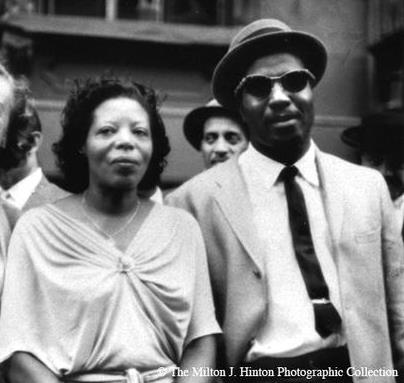I first heard this recording in the Spring of 1976 when I found my way to A Jazz Piano Anthology (front and back cover headlines the top of Music). Writing out the transcription in 1989 was one of the most ambitious scores I ever put together. Thirty years ago, the song was comfortably “in the hands”. Although I fell out of touch with this gem more than a decade ago, one to two hours daily practice beginning in January has brought it back to life. This recording was made on March 17th with Nina sitting in to support heart and mind continuity from start to finish.
My Mother was drawn to contemporary 20th Century forms of music while my Dad’s focus was opera and Beethoven. Growing up, I remember this album in our house and wondering who this person was whose name indicated religious connection. In his own time, Thelonious Monk’s sound and music was as wild and “outside” as Stravinsky’s decades before.
Orrin Keepnews was Monk’s producer at Riverside Records during the richly creative years 1955 to 1961. In 1986 he assembled the twenty-two LP boxed set, “Thelonious Monk: The Complete Riverside Recordings,” (comprising 153 numbers) and wrote the accompanying booklet, reproduced in The View From Within - Jazz Writings, 1948-1987. Reflecting on the initial piece he published in 1948 after meeting Monk for the first time, Keepnews wrote:
Calling his first records “an outstanding example of unified small band jazz,” I used such phrases as “discipline and coherence” and “purposeful and coordinated.” I noted his “warmth,” his “firm rhythmic sense (and) fertile imagination,” and found him “capable of a wry, satiric, humor that has a rare maturity.” Most remarkably, when you realize how much of a novice I was back then, I was able to perceive that “he is engaged in developing an essentially original piano style,” and that in those first recordings he had “created a band style molded around his own ideas and shaped to his own manner of playing, much as Jelly Roll Morton and Duke Ellington did before him.” I continue to feel that to appreciate properly Monk's work and his position in jazz history it is essential to understand that he stands in a direct line of succession from Morton and Ellington.
When I studied with her, Mary Lou Williams spoke of Thelonious Monk with great affection. In the 1940s, he was one of many people who gathered in her apartment after hours at 63 Hamilton Terrace. As described in Morning Glory: A Biography of Mary Lou Williams:
Monk at times could provide comic relief: “One morning I felt extra tired and I left the guys in the living room to enjoy themselves and went to bed,” Mary wrote. “Eventually everybody went and the last one out left the front door open, since it could only be locked from inside or with a key. I had twin beds in my room. When I awoke around noon, I was surprised to see a figure stretched out on the other one with a beret on. I yelled and the figure jumped up and ran into my closet, where all the clothes fell down. It was Monk. He explained he’d come to see me. Finding the door open, he came in but since I was asleep he decided not to play piano but wait for me, which he did. And he fell asleep. We always laughed about that.”
Yet, not only was Monk not well-known as a jazz pianist in the midforties, he was disparaged as a player by many. This did not bother him, Mary said, for Monk had artistic hauteur: he “always had that thing.” Like most musicians, too, he was poor, sometimes almost penniless, and Mary bought groceries more than once so that he could feed his children.
“Usually,” Mary wrote, “when Monk composed a song he’d play it both night and day if you didn’t stop him. He always said that was the only way to find out if it was going to be good. It either grew on you or it didn’t. His music is ... a conversation. It could be angry or love. Monk has an awful lot of that in his music.”
Of course, Monk and Powell had a direct influence on Mary’s approach to music. But Mary was an influence on Monk as well as on Powell, too. “In the forties,” notes Whitney Balliett of Mary’s evolving style, “she advanced certain dissonant chords that became part of Thelonious Monk’s permanent furniture.” Direct evidence of her influence on Monk is apparent in several compositions: in his “52nd Street Theme,” particularly the bass line, which is straight out of Mary’s “Scorpio”; in Monk’s “Hackensack,” which refers to Mary’s 1944 arrangement of “Lady Be Good”; and in his “Rhythm-a-ning,” based on the second chorus of her “Walkin’ and Swingin”.”

Reviving “Round Midnight is part of the current focus to celebrate Thelonious Monk and the enormous influence and magnificent contributions his music has gifted our world with.
